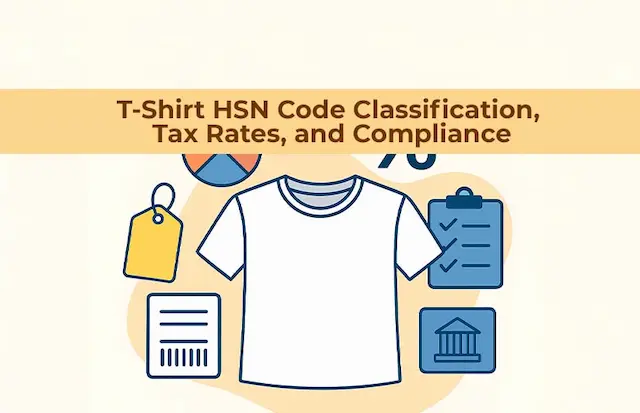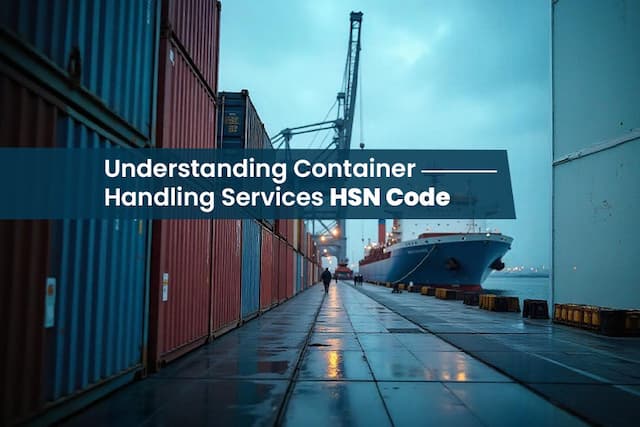In the agricultural sector, the accurate classification of products is not only about paperwork. It plays an important role in staying compliant, easing the processing of exports, and applying the correct tax application. Among high-volume agri commodities, paddy occupies a significant place in external and internal markets in India. For exporters, traders, and millers, knowing the correct HSN code for paddy will mean easier customs clearance, accurate GST filing, and eligibility for export benefits.
With the increasing demand for Indian paddy all over the world, appropriate documentation can make the difference between delayed cargoes and a smooth trade.
Understanding What HSN Codes Represent
The Harmonised System of Nomenclature (HSN) is an international nomenclature system formulated by the World Customs Organisation to group goods in standardising commodities of taxation and trade. HSN code is used by India with its GST regime as a measure to make cross-border and intra-state movement of goods and taxation of goods.
Identification of each product includes its numeric code, which is used to determine the product in the course of transport, invoicing, customs declaration, and auditing. HSN code in the case of paddy gives importance to agri exporters to determine whether the product is a raw material or a manufactured product, and how it will be involved in GST and the customs law.
What Is the Correct HSN Code for Paddy?
The raw and unprocessed Paddy falls under HSN code 1006. This code is categorised in Chapter 10, which deals with the cereals in the GST Tariff Schedule. Specifically –
- 1006.10 – paddy (raw in husk)
- 1006.20 – brown rice (husked)
- 1006.30 – Whole milled rice / polished rice / glazed rice
In case of raw paddy, if you would like to mill later, the classification should be entered as HSN 1006.10 to avoid mixing it up with rice or any other manufactured form. This difference is crucial to exporters, who have to indicate the product category in all invoices and customs paperwork.
GST Applicability on Paddy
The GST is exempt on raw paddy, and that makes its trade, storage, and inter-state transfer easier. However, after being transformed into rice, particularly packaged and branded, paddy can be subject to a 5 per cent GST based on the type of packaging and on the basis of its use in the market.
The exemption is only made when the product is not refined and branded. Using the HSN code of paddy in other forms is bound to cause a tax complication and can be investigated upon audit or export checking.
Why Classification Accuracy Is Critical for Exporters
To the exporter, proper product classification is linked to several important processes:
- Customs clearance
- Eligibility for RoDTEP or other rebate plans
- Definition of responsibilities
- Document preparation and shipping instructions
Application of the right code of HSN to paddy will make all the documents (commercial invoices, shipping bills, bill of lading, and GST turns) ensure uniformity throughout. Inaccurate codes would even cause delays at ports, refusal of the rebate request, or certificate disapproval on the foreign trade compliance audit.
Paddy vs. Rice: Common Errors in HSN Use
One of the most basic problems that are faced by new exporters in agriculture is the confusion between raw paddy and milled rice. Though they both come under HSN 1006, there is a shift in classification at the stages of processing. The exporters of rice have to use –
- 1006.30 for fully milled rice
- 1006.20 for Brown rice
- 1006.10 pure (raw) paddy
In case of failure to differentiate, this might lead to incorrect GST usage or refusal of export forms. The correct HSN code of paddy specifically comes under the customs classification of commodities in the agricultural sector of inspection and FSSAI.
E-Way Bills and Domestic Movement
Movement of paddy among states may need e-way bills without the existence of GST, even when there is no GST. The description of the product in this documentation should correspond to the HSN code. This enables the transport authorities to check the nature of goods and authenticate exemptions.
Traders need to ensure that the HSN code of paddy is printed correctly in an invoice and the e-way bill system. The code should be in proper form so that there are no roadblocks or fines during interstate movement.
Export Documentation and HSN Use
The exporters handling paddy must submit several documents –
- Shipping Bill
- Packing List
- Commercial Invoice
- Bill of Lading
All these should indicate the right product description as well as the HSN code. In India, multiple ports now receive the export documentation electronically, and with the wrong code, there may be a delay or system rejection. HSN code of paddy has also been allowed to determine rebate entitlements under RoDTEP, and it will be an incentive to agri-commodity exporters.
Why Digital Systems Require Clean Coding
As a majority of ERP, billing, and GST returns software are connected to government systems, it is no longer an option to have consistent classifications. The code, on purchase records, supplier invoices, export forms, and inventory reports, must appear the same.
Across different platforms, the same usage of the correct HSN code to identify paddy ensures better compliance, quicker audits, and a digital trace to prevent potential future inspections or claims of refund.
Know Your Code, Stay Compliant
Since India is emerging as a key global player in the agri-export business, exporters need to spend time studying the rules of classification. The HSN code of paddy is not just a figure; it is the source of proper handling, GST, customs clearance, and eligibility for export. Traders practising correct HSN procedures protect themselves from compliance issues and ensure better working processes in the local and global markets. Proper classification today establishes credibility, financial performance, and trade efficiency in the long-term future.
Are you an exporter of paddy in need of working capital or invoice financing? Credlix provides collateral-based financing that offers intelligent finance products exclusively to exporters. We give you streamlined documentation, open pricing, real-time approvals, and ease of doing business so you focus on your business, and Credlix powers your cash flow.
Frequently Asked Questions
Q1: Is GST applicable to paddy in India?
A1: No, paddy is exempt from GST in India under the current tax regime.
Q2: Does the HSN code for paddy change for export purposes?
A2: No, the HSN code 1006 remains the same for domestic sales and exports.
Q3: How is paddy classified under HSN?
A3: Paddy falls under Chapter 10 of the HSN, specifically under code 1006 for cereals.
Q4: What is the HSN code for non-basmati rice?
A4: The HSN Code for all types of rice, including non-basmati rice, is 1006.





